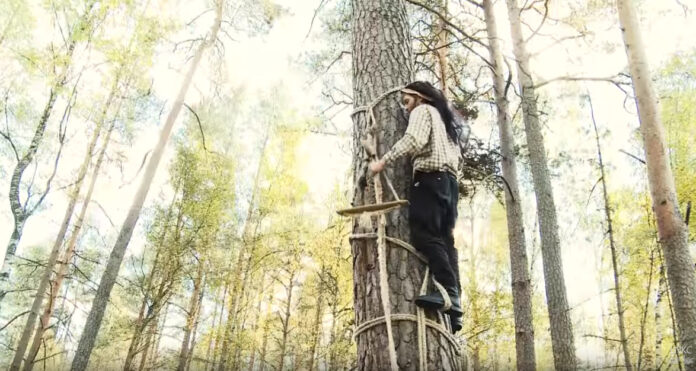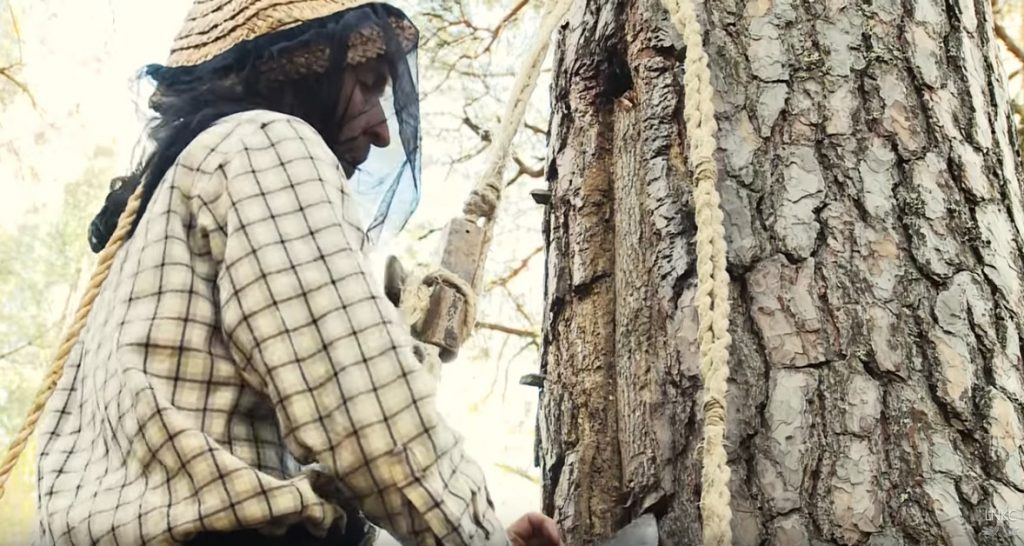
The ten long-standing Lithuanian traditions recently added to the UNESCO Intangible Cultural Heritage list are: tree-hollow beekeeping in the Varėna region, crafting of skiff weathervanes in the Curonian Lagoon, wedding rituals of Crimean Karaites in Lithuania, traditional decorated pouches or handbags (delmonai) of Lithuania Minor, traditional steam-bathing, the Summer Solstice (Rasa) festival in Kernavė, traditional Easter drumming in Aukštaitija, place-name commemoration, the traditional Tatar wedding cake (čiakčiak), hill-singing in Žemaičių Kalvarija.
I – Tree-Hollow Beekeeping – Drėvinė bitininkystė
For our forest-dwelling ancestors, an important food-source was honey, and beekeeping was a social form of agriculture. Tree-hollow beekeeping was predominant until the 16th century and the first half of the 17th century. Forest-owners had their own “bee farms”, which their peasants took care of. Tree-hollow beekeeping continued until the beginning of the 20th century, when the bees were kept in tree-stumps and hives on the peasants’ own farms. In the second half of the 1800’s tree-hollow beekeeping was mostly undertaken in the forested part of Southeastern Lithuania. A strong old tree-hollow might produce up to 16.38 kg of honey and over a third of a kilo of beeswax. This type of beekeeping could not be sustained in other regions of Lithuania due to extensive tree-cutting.

In the late 18th and early 19th centuries, the practice of beekeping would begin with the gift of a bee swarm. Beekeepers would give the swarm to a neighbour, relative, godchild or worthy farm-hand considered to have the “calling”. Superstition prevented the sale of bees until the early 1900’s. Most beekeepers, especially older ones, avoided selling bees because that meant selling their good fortune. Tree-hollow beekeeping always, and for a long time even homestead beekeeping was exclusively carried out by men. According to the old beliefs, beekeeping could only be done by adult males.
Here is a charming video, in which the beekeeper shows visitors how he expertly climbs a tree trunk and extracts honeycomb from its hollow, noting that he wears woollen cording around his wrists to prevent bee-stings:





























